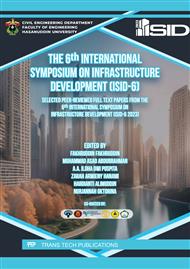p.157
p.165
p.177
p.185
p.195
p.207
p.217
p.227
p.239
Evaluation of Operational Safety Risk in Tank Development Project
Abstract:
This study aims to evaluate the risks that arise in tank operations and design risk mitigation for tank operations. This research uses the Hazard and Operability Study (HAZOP) method, where HAZOP is used to explain each part of the process to determine the risk of tank operations made and the causes and consequences. The data collected includes primary data and secondary data. Primary data is obtained through observation, interviews, and questionnaire survey results. The data sample in this study was carried out on a stockpile tank construction project owned by state-owned PT Pertamina Persero. The results showed that 1) sources of danger classified as extreme were found in the risk of fire, 2) sources of danger classified as extreme were found in the risk of fire, while the source of danger classified as moderate was the queue of tank cars, 3) risk mitigation obtained in this study were 36 mitigations in the process of receiving fuel oil and 35 mitigations in the process of distributing fuel oil, and the impact of risks obtained in this study in the form of fire, material loss, environmental pollution, oil contamination, explosion, tank leakage, sparks, lightning, overpressure, queuing mobile tanks
Info:
Periodical:
Pages:
207-216
Citation:
Online since:
July 2025
Authors:
Price:
Сopyright:
© 2025 Trans Tech Publications Ltd. All Rights Reserved
Share:
Citation:


